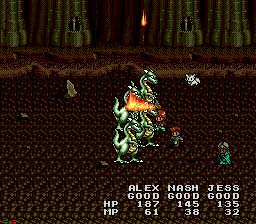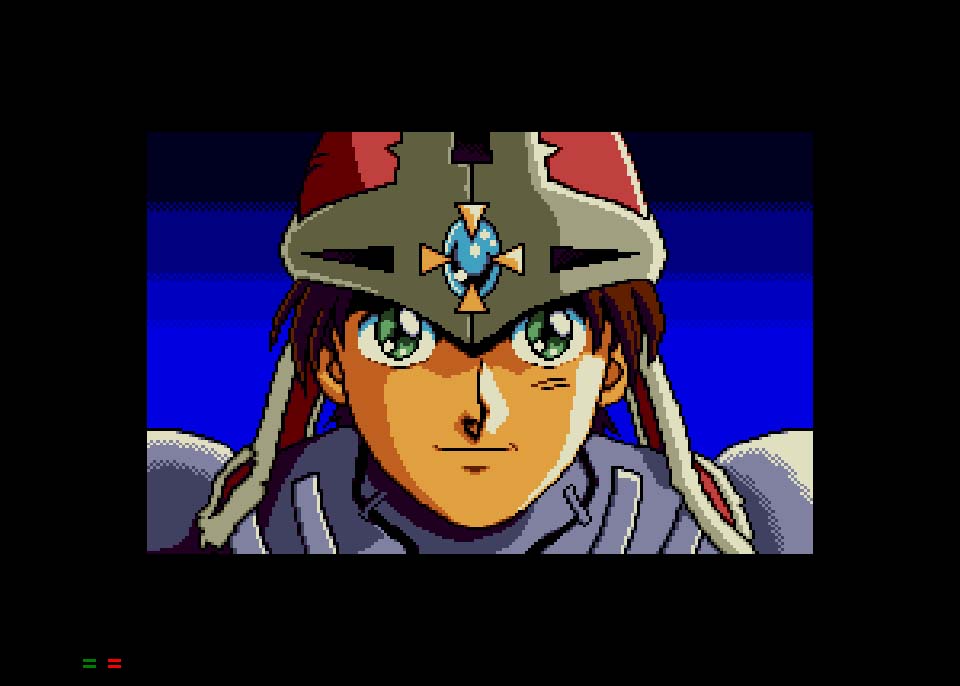It’s rare for a remake to completely overshadow its predecessor. Even if the remake is faithful and notably improves things, plenty of people will still defend the original as the superior version. Sure, it might just be nostalgia talking, but almost every “original” has its defenders. Take Lunar: Eternal Blue for example. While Lunar 2: Eternal Blue Complete makes many improvements and adjustments, like eliminating Magic Points (and Working Designs’ baffling choice to force you to use those points to save your game), I still prefer the original for its balancing and additional cutscenes, warts and all.
I can’t imagine anyone thinking Lunar: The Silver Star is superior to Silver Star Story Complete. There’s no doubt that The Silver Star is a remarkable feat for a 1992 Sega CD RPG, but its design and writing are improved so dramatically in Silver Star Story Complete that it renders the original version obsolete, despite being fairly different in many ways. There’s still plenty to like here, but it wears its age on its sleeve, and its flaws are all the more noticeable because I know that Game Arts could do something similar, but better.
These flaws might be most apparent in the narrative. Lunar: The Silver Star opens in the town of Burg, with our silent protagonist, Alex, standing at the grave of his hero, Dragonmaster Dyne. His pal, Ramus, asks Alex to take a trip to the nearby White Dragon Cave to grab a precious diamond. Of course, aspiring adventurer that Alex is, he goes along, with his adopted sister (and love interest? Don’t think about it too hard), Luna. When they reach the cave, the White Dragon tells Alex that to become a Dragonmaster, he must travel to the mainland, and of course, off he goes on his great adventure! It’s delightfully familiar, even if you haven’t played one of the many iterations of Lunar: The Silver Star.

That same tone and rhythm continue throughout, complete with (at least) one huge anime betrayal, new towns, dungeons, and problems to solve. If you’ve played SSSC, the story beats are a little different here, but nothing too notable changes. Except that Luna doesn’t get on the boat with you, which means you don’t get one of the absolute highlights of later versions. Either way, it’s mostly lighthearted, good-natured fun reminiscent of early ’90s anime or Saturday morning cartoons.
Sure, it won’t blow your mind, but that’s not what Lunar is good at. It’s good at characters. And they’re still all here. Jessica still has a short fuse. Kyle might be even more lecherous than he is in later versions. But you can also see that the writers didn’t really understand that strength yet. We don’t get to see the characters as much, their motivations don’t make as much sense, and there’s a lot less humor. A lot of that, I’m sure, comes down to Working Designs’ localization. Love it or hate it, their work translating these games created an identity all their own by inserting humor, wit, and more than the occasional pop culture reference. I love it, and there’s still nothing that quite strikes that tone. But they didn’t go nearly as hard this early in the series. Some of their hallmarks are still evident, but the writing is much more straightforward in Lunar: The Silver Star. It lacks a lot of the flavor, a lot of the life, of Silver Star Story Complete, making it a much more vanilla experience. I just didn’t connect with the characters the same way in this version, and in a Lunar game, that’s pretty damning.
Of course, presentation is a big part of what makes the Lunar games tick, and no doubt, The Silver Star goes a long way toward establishing the standard of the series. The sporadic anime cutscenes are surprisingly effective and help establish the tone. And the voice acting is so delightfully campy, especially the amazing performance of John Truitt as Ghaleon. The music, while being quite sparse (only about 30 minutes of tracks cover the whole game), is the only thing that’s actually better here: composers Noriyuki Iwadare, Hiroshi Fujioka, Isao Mizoguchi, and Yoshiaki Kubotera took full advantage of the Sega CD hardware, and all of the music sounds bright, cheery, and full, especially the killer opening theme. But the rest of the game’s presentation, notably the graphics, falter. Honestly, Lunar: The Silver Star just isn’t very pleasant to look at, despite pushing the Sega CD to its limit. It’s all very brown and very drab. Sure, there’s some color present, but the developers clearly hadn’t found the signature “look” of the series quite yet. It’s not a deal breaker, but it works at odds with the rest of the game’s tone, so it’s a little jarring.

This visual choice is probably most unpleasant in the dungeons, but you’d better get used to it, because there are a lot of dungeons here, and most of them basically look the same: dark and brown. Oh, and they’re also interminably long. The weird controls, where characters keep moving in a random direction after they run into a wall, don’t help much either. To top it all off, The Silver Star has random encounters, and the rate is absurdly high, so you’ll spend an awful lot of time in dungeons and fights.
That wouldn’t be so bad if the combat were more fun, but it’s not. It’s essentially the same as the later games: a turn-based affair with your characters positioned on one side of the screen and enemies on the other. To hit an enemy, characters must move toward them, and vice versa. If a character can’t move far enough to execute their attack, their turn ends. There are area-of-effect spells and abilities that hit certain areas of the map, which makes positioning important. You also have magic attacks, and some characters can execute multiple physical attacks in the same round. And…that’s about it. Nothing too ground-breaking, but it’s fine in theory. It’s just not as well executed in Lunar: The Silver Star as it is in later versions.
Characters don’t have much variety in their moves, and some skills are essentially useless. This is compounded by the fact that, in most cases, the best plan of action is just hitting the regular attack button, since it does more damage than all but a couple of spells. Maybe the biggest issue is that the game is insultingly easy. I just fought the final boss, and as a test, I decided to use regular physical attacks and nothing else. No spells from my spell casters. No healing. I wailed on the boss, and within four rounds, he went down. No sweat. When combat happens as often as it does in this game, I need a little more variety, and definitely a little more challenge.

The rest of the gameplay doesn’t fare much better, but it’s all standard early ’90s stuff. The party has a limited shared inventory and must equip items to use them in battle. But you pick up far more items than you have room for, so you have to spend a lot of time deciding what to keep. Menu navigation is finicky and overly convoluted. And until late in the game, when you complete a dungeon, you often have to walk back to the entrance. This version doesn’t even allow you to fully heal in most towns. Like I said, this is what I expect of a game from this era. But there are just a few too many annoying design decisions for me to overlook, and it generally hampers the experience, especially when I’ve played basically the same game without most of these little annoyances.
Indeed, the shadow of Lunar: Silver Star Story Complete looms large over Lunar: The Silver Star. Don’t get me wrong: there’s a lot to enjoy in this game, like the charming characters, the exceptionally over-the-top cutscenes and voice acting, and its music. I’m sure it was amazing in 1992. But, in 2023, when there’s at least one better version out there, Lunar: The Silver Star is nothing more than a history lesson, and an often frustrating one at that. Otherwise, pick up your phone (or PS1) and play the better version. You won’t regret it.


